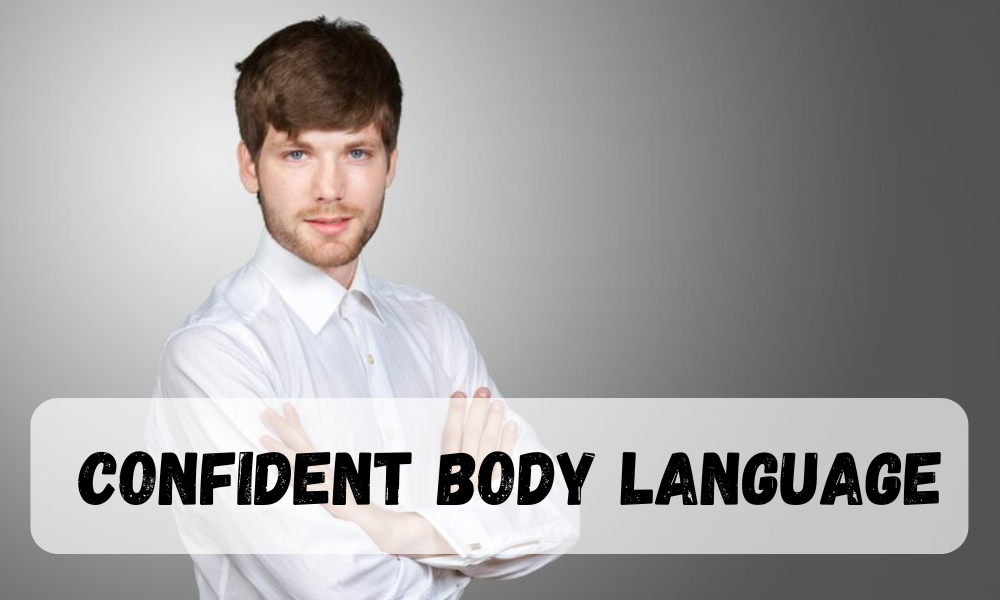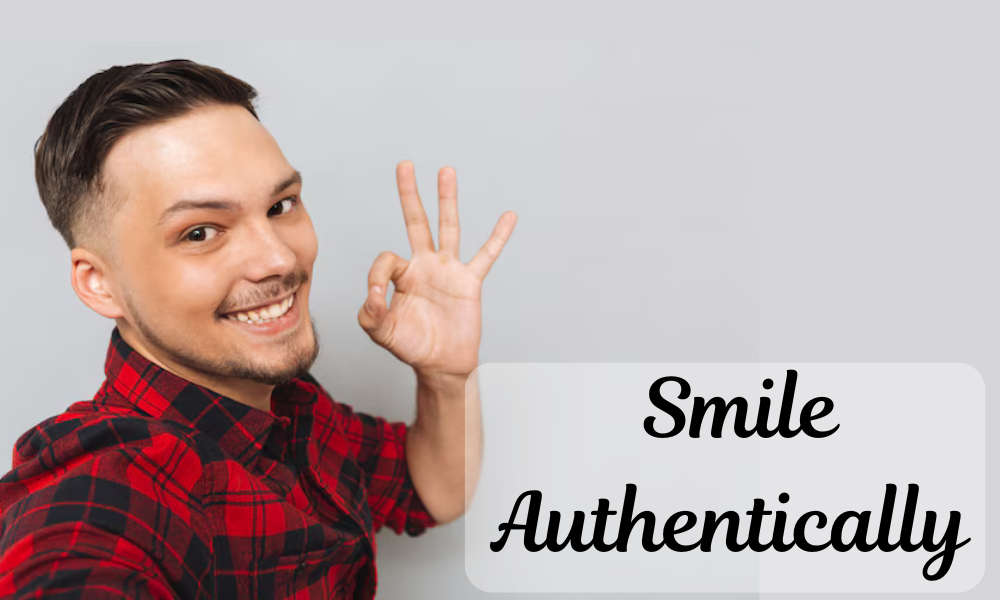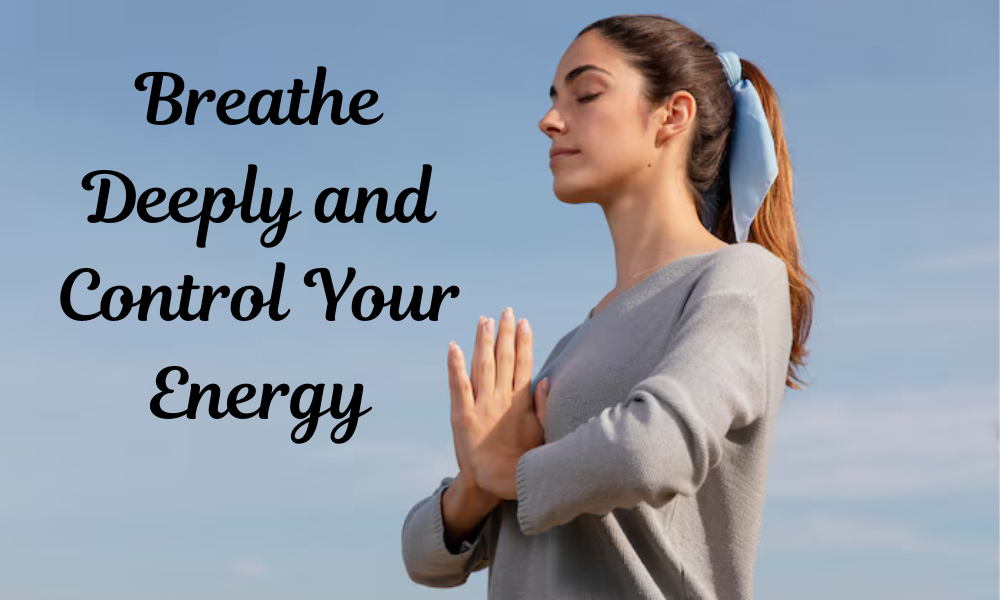Ways to Have More Confident Body Language
Introduction
Table of Contents
Toggle
Body language speaks volumes, often much more than words ever can. Indeed, it reveals your inner feelings and acts as a mirror in which others see you. Be it in social, professional, or personal situations, developing a confident body language has the strongest impact on how you join others and navigate this world. Confident body language signals authority, trustworthiness and warmth which influences how people respond to you.
You definitely have to work on your nonverbal cues if you want to project more self-assurance, build stronger connections and become a more influential presence. Body language is not about just appearing confident-well, it is about feeling that way inside and letting it shine through every gesture, movement, and posture.
In this blog, we will discuss eight effective tips on improving Body language and exuding confidence from the start.
1. Perfect Your Posture

Posture is what supports body language expressing confidence. Good posture shows strength, openness, and authority while poor posture seems to reveal insecurity or lack of energy. For a good posture, stand straight with your shoulders pulled back naturally; head level, neither tilted down nor tilting upward, chest open but not puffed out; dispense weight evenly across both feet instead of leaning to one side. When you sit, you should suppress an inclination to slouch; sit tall, with your back supported against the chair.
Good posture not only improves how you are seen by others but also what you think about yourself. Studies show that an upright posture lifts your mood and self-esteem in almost no time. Better posture comes through consistent yoga or Pilates practice or honest exercises, such as wall sits. Check yourself every time you walk through a doorway or whenever you cast a glance in the mirror. In a while, that strong, aligned posture will be second nature, and you will appear powerful and confident without effort.
2. Master Eye Contact

Eye con-tact is an extremely important aspect of showing confident body language. Eye contact indicates you are paying attention, are trustworthy, and are engaged to some degree. On the other hand, a lack of eye contact can indicate nervousness, dishonesty, or low self-esteem. When speaking, aim for eye contact 50–60% of the time and listening 70% of the time. This balance will avoid making you seem overly aggressive or intense.
Eye contact should last long enough to engage but not so long as to feel uncomfortable. If making eye contact is somewhat scary, you could try concentrating on the bridge of the person’s nose or just above the eyebrows. Shift your focus from one person to another every few seconds in a group-context setting so that you are including all.
In addition, training your eye contact keeps you in the moment and increases your interactional experience. If you’re feeling at all nervous, use it as an opportunity to remind yourself that natural eye contact makes you more human and approachable. In a very short time, purposeful eye contact will become second nature, allowing you to appear more confident in any personal or professional setting.
3. Embrace Open Gestures and Movements

Open, expansive gestures connote confidence, approachability, and honesty. Confident individuals naturally take up space with their bodies and use their bodies to communicate freely. To accomplish this, keep arms open and hands visible. Crossing of the arms, hiding of hands, and nervous gestures like tapping fingers or playing with jewelry are all signs of discomfort or defensiveness.
Using your hands for emphasis during the conversation will underscore important points. Slow, deliberate movements bear more power than fast, jittery ones. Open palms and wide gestures indicate honesty and simplicity; tight, small gestures suggest nervousness and wariness. The lower half of your body needs attention, too. Keep your feet planted flat on the floor or stand shoulder-width apart to help yourself feel grounded, both physically and mentally.
Aim to avoid nervous fidgeting. This could detract attention from your message and make you look less confident. Rather, focus on smooth, deliberate movements that match your words and energy. Practicing these gestures in casual conversation will help you feel much more comfortable doing them later. In time, open body language will help you appear as a confident, charismatic communicator in all situations.
4. Smile Authentically

A true smile may be one of the most effective tools for you to project confidence, welcome and friendliness. Smiling will definitely make you look more approachable, trustworthy, and self-assured. But it is all about being real; a fake smile becomes so easy to identify and worse still, it may have the reverse effect. A genuine smile engages the mouth and eyes in producing warmth and sincerity.
A further advantage of smiling outside the obvious is that good-feel chemicals in your brain, dopamine, and serotonin, can be released, elevating your mood while actually depressing stress. Thus, not just presenting you as confident to others will a smile, but it also makes you feel much more confident. If you’re the type who’s shy about smiling naturally, think of something very happy–a memory, someone you loved–just before getting interactions. These are great for smiling beginning and end during conversations, with greeting people, and expressing agreement and encouragement. Good, but not too much, otherwise, it is inappropriately interpreted as nervousness rather than confidence. A warm smile in business context is what goes a long way to build trust and rapport. Practice smiling in front of a mirror until it feels second nature-that simple, sincere smile is a strong force that can uplift the presence of confidence within a space or a room.
5. Breathe Deeply and Control Your Energy

The interplay between breathing patterns and body language as well as emotional states is a deep one. Shallow and fast breathing often signifies emotions like anxiety or insecurity, while deep and slow breathing radiates calmness, control and confidence. While preparing to enter an occasion, be it a presentation, an interview, or an important conversation, when you may need to portray confidence, take a moment to do some deep-breathing exercises.
Box breathing is one such technique: inhale for a count of four, hold it for four, exhale for four, hold for four again. This rhythm calms the heart rate, brings focus to the mind, and grounds the energy.
Breath awareness during conversations will help adjust the pace and tone of your speech. Instead of hurrying along in a loud, high-pitched voice — a telltale sign of nervousness — you will slow down, articulating much more clearly and with authority. It creates a physical and mental anchor for you, empowering you to hold a confident posture, gestures, and expressions.
Gradually adding this deep-steady-breathing regimen into your life will not only diminish anxiety but will greatly amplify the effects of every other body language signal you send.
6. Practice the Power Pose

According to Amy Cuddy’s landmark research, stand in a power pose for just two minutes to bestow an increase in testosterone (dominant hormone) and reduction of cortisol (stress hormone). While some subsequent studies have found these effects to be lessened so far, many people still consider power posing an effective means to boosting confidence.
The power pose is to stand upright with feet before you at shoulder-width distance from each other. Stack both arms firmly on your hips and a little chin up while naturally puffing your chest. Alternatively, stand with your arms raised high to form a V-shape, like a victorious athlete crossing the finish line. Hold this pose for about two minutes while inhaling and exhaling in wholly concentrated, steady breaths.
In fact, these high-importance contexts vary widely: interview, speech, meeting, and everything in between require the power pose beforehand to prepare the body and especially the mind for the victory. Even when a power pose can’t be physically achieved, imagining an expansive, powerful stance has favourable effects psychologically. Power poses are great when backed with regular practice, as over time they create the mental habit of possessing strength and capability in any situation, leading to the edge of projecting indomitable confidence when needed most.
7. Mirror Subtly to Build Rapport

Mirroring is a delicate art that involves mimicking another person’s body language in an effort to conjure feelings of empathy and connection. While this comes naturally, it accomplishes the goals of establishing rapport, trust, and that uncanny feeling of “being in the same groove” with the other; all of this constitutes an appearance of confidence and social grace.
Mirroring entails watching the posture, gestures, and rhythm of the other person; after a few seconds, adopting a identical position-and-movement. Leaning in a little when the other person leans in; mimicking open-hand gestures when open-hand gestures are being made. Subtlety is the real key here, as blatant imitation can easily seem mocking or disingenuous.
This also involves tone and pace. Matching the tone and pace of the other person’s voice allows the conversation to flow and makes someone become more relatable.
In rehearsing mirroring, practice grants social confidence, whereas empathy becomes heightened when social cues are noticed: In time, mirroring is going to come to you naturally and allow you to build deep connections, thus enhancing the aura of your presence at all times.
8. Practice Consistently to Make It Natural

Body language that communicates confidence is, like all skills, one that requires continuous practice to become an unthinking and natural part of yourself. You aren’t expected to learn how to master posture, eye contact, gestures, breathing, and smiling all at once — and that is fine. Focus on one or two elements at a time.
Low-pressure areas would be: conversations with friends, informal meetings, and just talking to yourself. You could also record yourself in practice — during rehearsal or practice and afterwards give yourself feedback while watching. Improving a little each day can contribute significantly over the long haul.
Find speaking or leadership groups, like Toastmasters, where you can go monthly to work on speaking and body language skills. Role-playing important conversations, like interviews or negotiations, is also useful.
Rather than trying to get the confident body language pose right, aim to embody it naturally in any situation. With enough rehearsal, these behaviors become you: natural, easy, and confident.
Anything else is acting. Practice it regularly, mindfully, and soon confident body language will cease to feel like a conscious effort and will become the utmost expression of the true you.
Want to boost your confidence? Try these powerful body language tips and feel the difference! Watch now!
Conclusion
Confident body language will transform not only the way people perceive you but also the way you perceive yourself. It is not about faking or acting; it is about being more of the real you, the powerful you. There are many small signals that send a message of confidence inside you on the outside: your posture, your gestures, your facial expression — even the way you breathe can convey that.
Start with standing tall, with your shoulders back and head high. A good, crisp posture screams confidence. Smile a good smile from within — a real smile opens doors, inspires trust, and makes you feel positive inside. Move your body purposefully; there is no such thing as an innocent gesture or a casual step. Breath deep and slow, center yourself, and calm any anxiety that comes creeping in.
Besides adjusting posture and gestures, this is where the magic truly happens — in the moment of connection with others. Eye contact. Listen listening. Be open and curious. Confidence does not come from the ability to strut in a room; rather, it stems from a strong sense of self that allows one to fully notice and honor those around them.
Each incremental change you make augments your personal power, deepens your relationship with others, and beckons fresh opportunities into your life. The journey of self-improvement may be slow, but every effort builds momentum.
So start now — because your most confident, vibrant, empowered self exists right now within you, waiting to be manifested.
